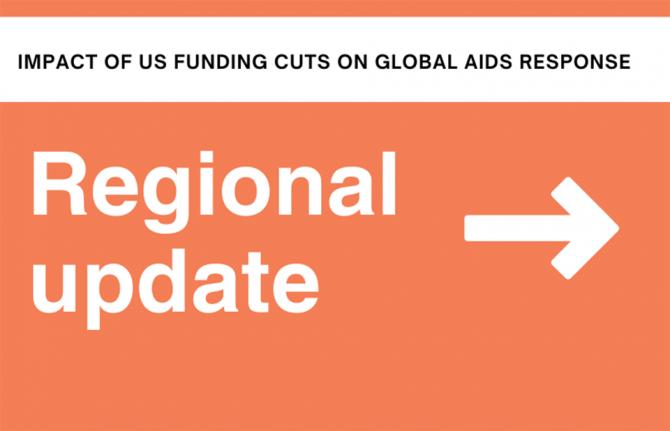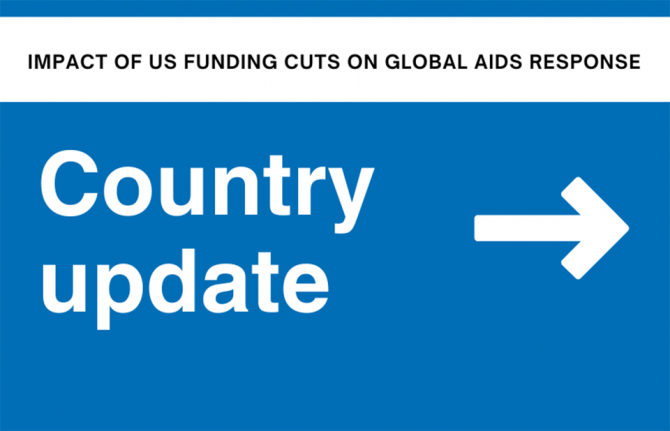
Feature Story
Country spotlight Botswana: ‘the AIDS response has been catalytic in strengthening our health system’
21 September 2010
21 September 2010 21 September 2010Botswana’s coordinator of the National AIDS Coordinating Agency, Richard Matlhare, shares his thoughts on Botswana’s progress in MDG 6.

Richard Matlhare of Botswana’s National AIDS Coordinating Agency.
UNAIDS: What would you say is the greatest success to date in Botswana’s AIDS response?
Mr. Matlhare: There are two levels of success: governance and programme performance. In the area of governance, there is strong political will and leadership for the AIDS response. This has translated into domestic financial resource allocation which covers between 70 to 90 percent of the national response needs.
On the programmatic level, success can be seen in the robust antiretroviral treatment and prevention of mother-to-child transmission (PMTCT) programmes that have over 93% and 94% coverage rates respectively. The quality of life for people living with HIV has been enhanced and the number of AIDS deaths averted has significantly reduced by 50% since initiation of the treatment programme. Mother-to-child transmission has been reduced to less than 4%.
Uptake of voluntary counseling and testing services is also high, at 56% among those sexually active, and we have also seen a 90% uptake of testing at health facilities.
UNAIDS: Can you share some of the main obstacles to achieving MDG 6 in Botswana?
Mr. Matlhare: Although we have not been measuring incidence, the proxy indictor of HIV prevalence among 15 to 19 year olds, from ANC Sentinel Surveys, reveals that Botswana has been able to halt the spread of HIV from having an adult HIV prevalence of 24.7% in 2001 to 13.2% in 2009. However, achieving the current national targets of 50% reduction in incidence rates by 2016 is yet to be realized. The recently released “Know Your Epidemic and Response” report shows that low risk heterosexual sex is the main mode of transmission, with contextual factors being the main barrier to behavior change. More focus and efforts are needed to mobilize both communities and individuals for increased and sustained behavior change. But to realize this, a better understanding of the interventions that work best for us is needed.
UNAIDS: How are investments in the AIDS response in Botswana advancing the other MDGs?
Mr. Matlhare: The advent of HIV in Botswana stretched the capacity of our health system, revealing critical gaps that affected health outcomes. The AIDS response has been catalytic in strengthening our health systems. Some of the main benefits include an increase in the number of skilled human resources, the strengthening of the central medical stores in supply chain management, and upgrading of laboratory services. The impact of these improvements is not limited to HIV but across the other health-related MDGs.
Another notable area is the provision of support to orphans and vulnerable children. This has had a direct effect on reducing poverty—MDG 1. Unlike in some countries, Botswana’s AIDS programme does not differentiate between AIDS orphans and non-AIDS orphans; all orphans benefit. In addition, the free provision of antiretroviral treatment means that a person living with HIV does not have to divert his disposable income to purchase these lifesaving drugs. This programme has alleviated poverty and increased life expectancy. These are just a few examples of the impact of the AIDS response on the other MDGs.
UNAIDS: Should Botswana’s AIDS response be addressed as a stand alone public health issue or in tandem with other global health movements?
Mr. Matlhare: The focus on HIV in the first national strategic framework was critical to galvanize and mount an effective response, and we should be careful not to lose focus on the gains of addressing HIV as a stand alone health issue. However, as we enter into the era of the second national strategic framework, there is a need for a more holistic approach through integrated service delivery while still utilizing a multi-sectoral approach. This will ensure that the gains so far are consolidated while cost efficiency and economies of scale are achieved.
UNAIDS: What is happening in Botswana to make HIV prevention a priority?
Mr. Matlhare: In our new HIV policy and the second national strategic framework, prevention has been singled as the top priority. In addition, Botswana has developed a prevention plan that provides guidance to all stakeholders. To ensure success at the community level, partners have been mobilized to embark on proven prevention initiatives. The country is fully committed to increasing prevention resource allocation to match this prioritization. For instance, male circumcision has been adopted and its roll-out will complement other prevention efforts.


